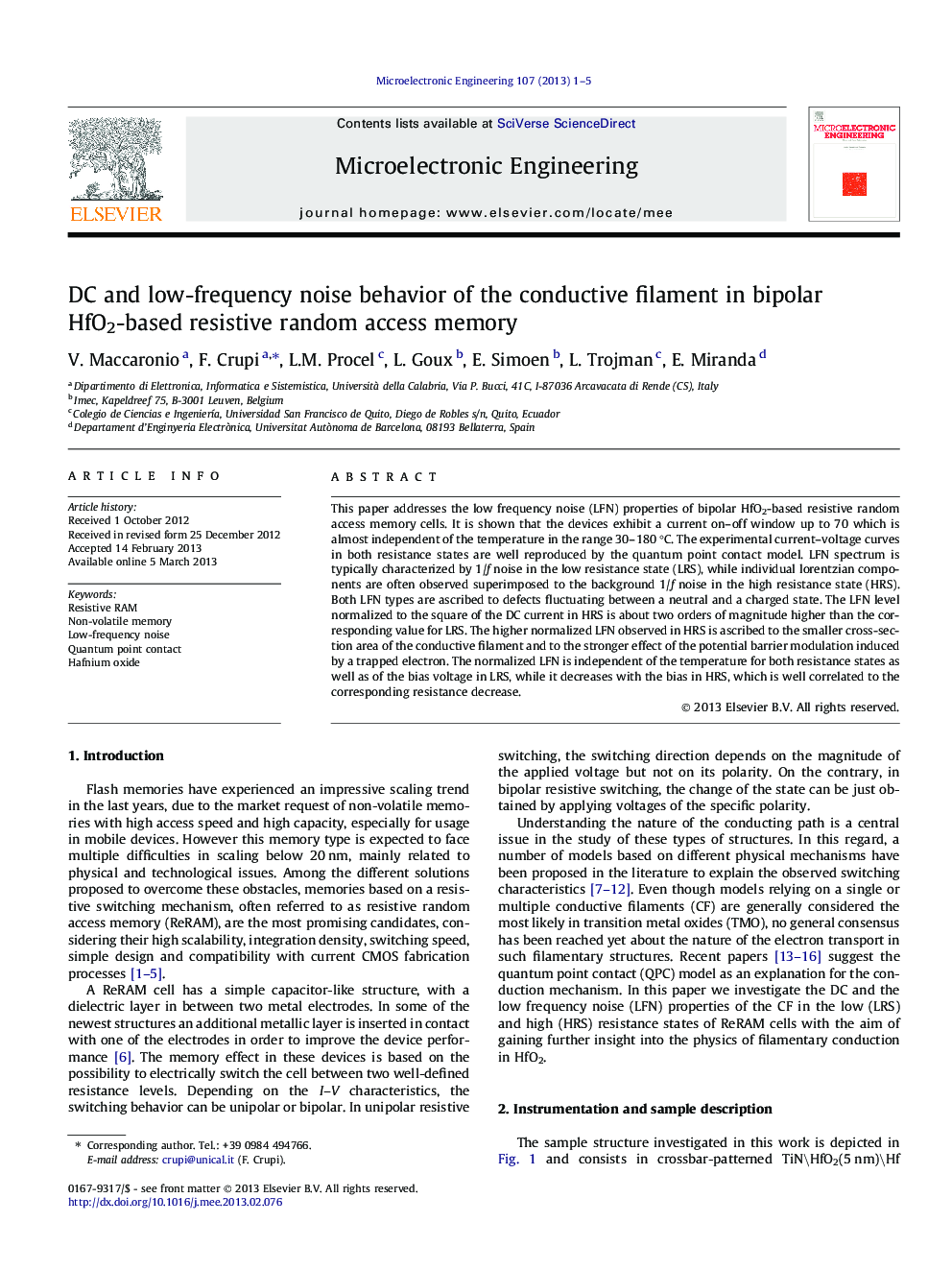| Article ID | Journal | Published Year | Pages | File Type |
|---|---|---|---|---|
| 539231 | Microelectronic Engineering | 2013 | 5 Pages |
This paper addresses the low frequency noise (LFN) properties of bipolar HfO2-based resistive random access memory cells. It is shown that the devices exhibit a current on–off window up to 70 which is almost independent of the temperature in the range 30–180 °C. The experimental current–voltage curves in both resistance states are well reproduced by the quantum point contact model. LFN spectrum is typically characterized by 1/f noise in the low resistance state (LRS), while individual lorentzian components are often observed superimposed to the background 1/f noise in the high resistance state (HRS). Both LFN types are ascribed to defects fluctuating between a neutral and a charged state. The LFN level normalized to the square of the DC current in HRS is about two orders of magnitude higher than the corresponding value for LRS. The higher normalized LFN observed in HRS is ascribed to the smaller cross-section area of the conductive filament and to the stronger effect of the potential barrier modulation induced by a trapped electron. The normalized LFN is independent of the temperature for both resistance states as well as of the bias voltage in LRS, while it decreases with the bias in HRS, which is well correlated to the corresponding resistance decrease.
Graphical abstractFigure optionsDownload full-size imageDownload as PowerPoint slideHighlights► We perform DC and LFN characterization of HfO2-based resistive RAM cells. ► Normalized noise in HRS is two order of magnitude higher than in LRS. ► Normalized noise in both states is independent from temperature variations. ► Normalized noise is DC voltage independent in LRS but it slightly decreases in HRS. ► Experimental results agree well with quantum point contact model.
